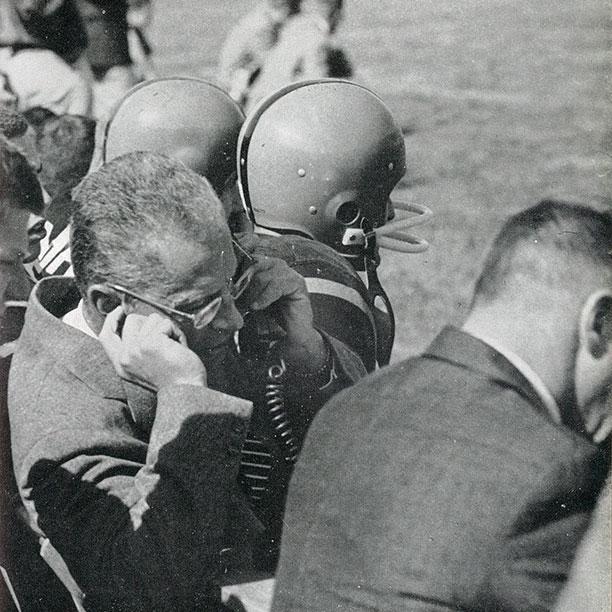
Head coach Charlie Caldwell ’25 devised the system in the early 1950s, assisted by coaches, faculty, and staff who combined football and computational expertise. His data collection was extraordinary: Spotters would create a detailed account of the game, and the coaches would follow up with analysis of the game films, assigning a grade, on a scale of 1 to 7, for each player on each play. (The scale mirrored Princeton’s academic grades at the time, since the cards were coded by operators in the registrar’s office.) After Caldwell’s death in 1957, his successor, Dick Colman, carried the work forward.
John D. Davies ’41, PAW’s editor at the time, wrote about the system in a story titled “IBM Machines Make the Tiger Roar,” published in the Oct. 16, 1961, issue of Sports Illustrated and reprinted in PAW two weeks later (read the full story at SI.com/Vault). Davies’ feature was accompanied by illustrations that included an Einstein-esque pipe-smoking professor and a robotic coach delivering locker room instructions via ticker tape.
Here’s how he described the original vision laid out by Caldwell and his colleagues:
In the language of physics, they convinced themselves that a football game is nothing more than approximately 150 “explosions” (plays) triggered by the snapping of the ball and hurling of 22 “electrons” (players) into various high-speed tracks and random collisions. A scientific mode of analysis is to translate motion into the symbols of science — that is, mathematics — and to “measure” each action by assigning it a numerical value; by coding these “bits” of information onto punch cards and running the cards through a computer, it is possible to discover patterns, regularities, repetitions among the various explosions that render the particular phenomenon comprehensible to the human mind. The scientist deduces a theory that explains the process and makes it possible to manipulate it and to predict the results of future experiments.
What did the Tiger coaches learn from this analytical exercise? They detected patterns in what worked and what didn’t. They gave feedback to individual players. They identified tendencies of their opponents that might not have been visible without such a detailed data set.
But Davies pushed back: If scientific football is so useful, he asked Colman, why doesn’t Princeton win the Ivy League every year?
“You don’t understand,” the coach replied. “All it does is make it possible for us to give the boys the finest training in our power. Coaches don’t win football games, and computers don’t play in them. The whole darn system isn’t worth as much as one good 205-pound halfback.”
